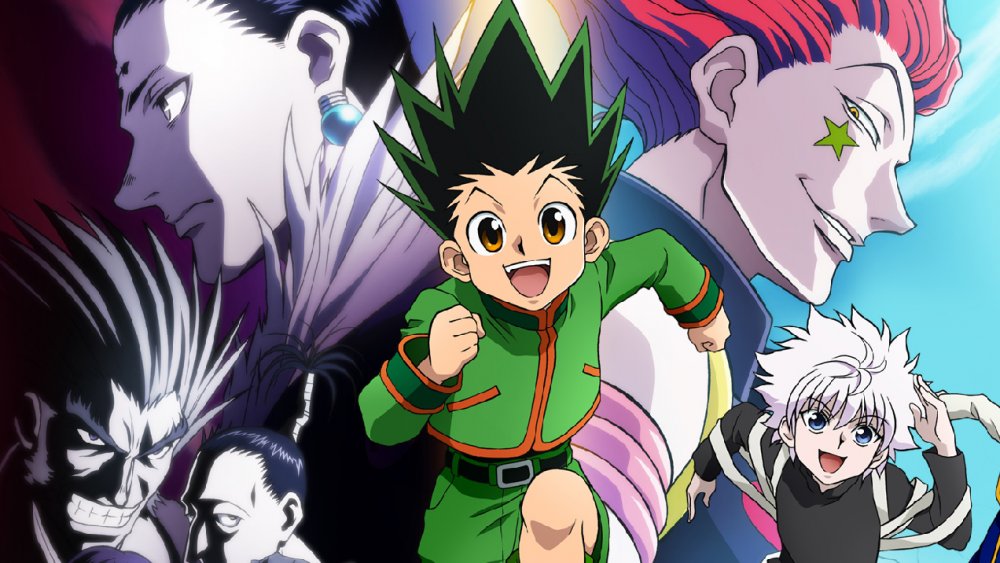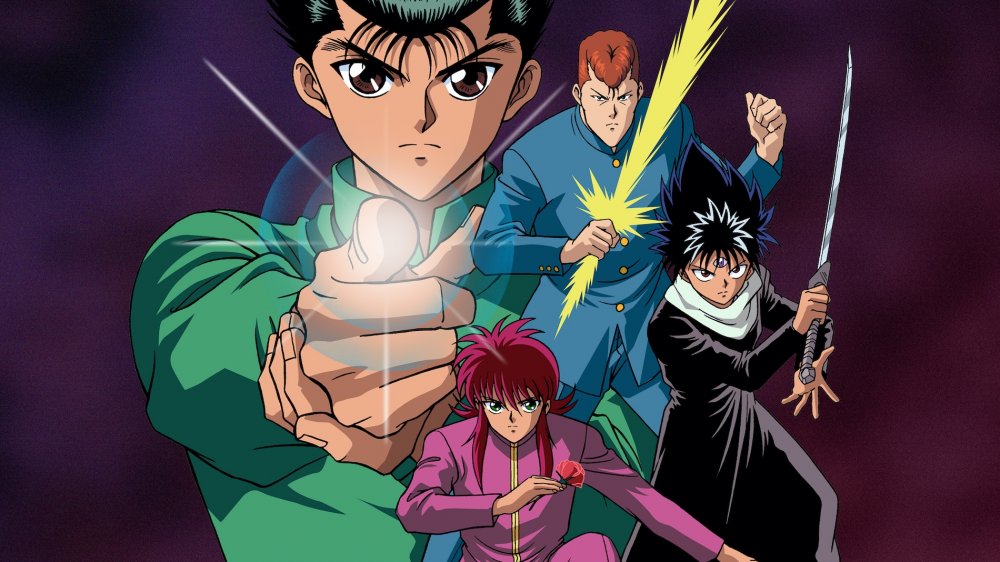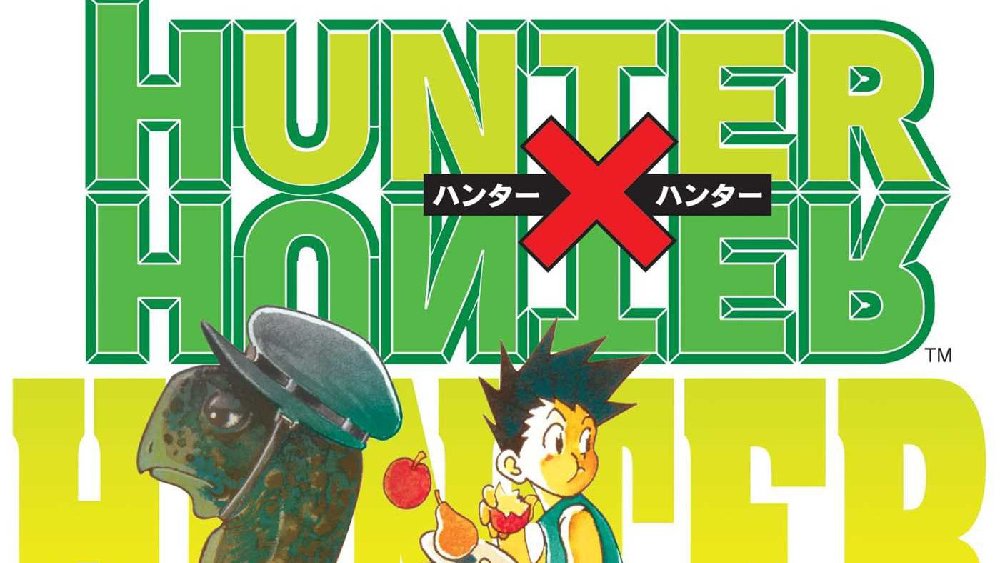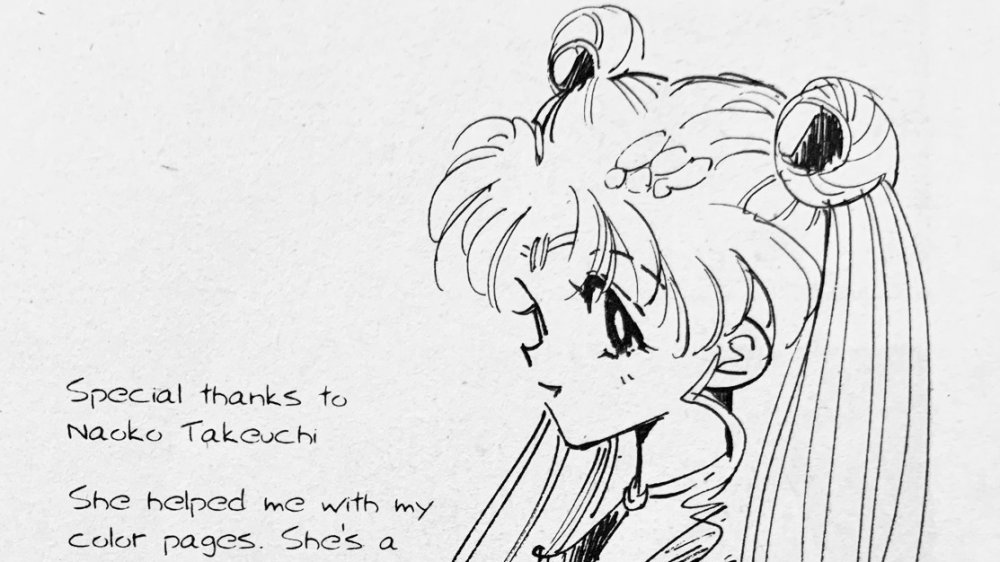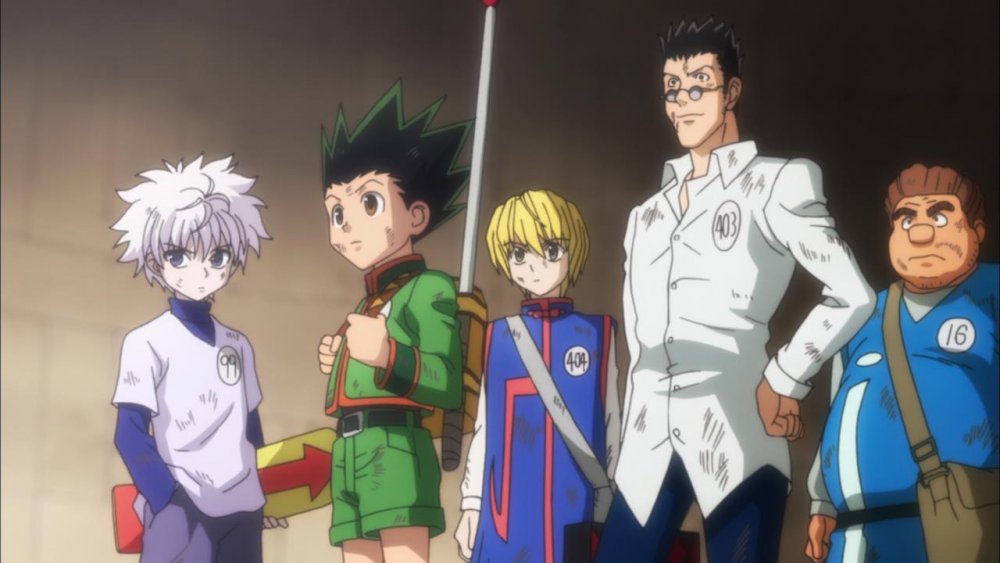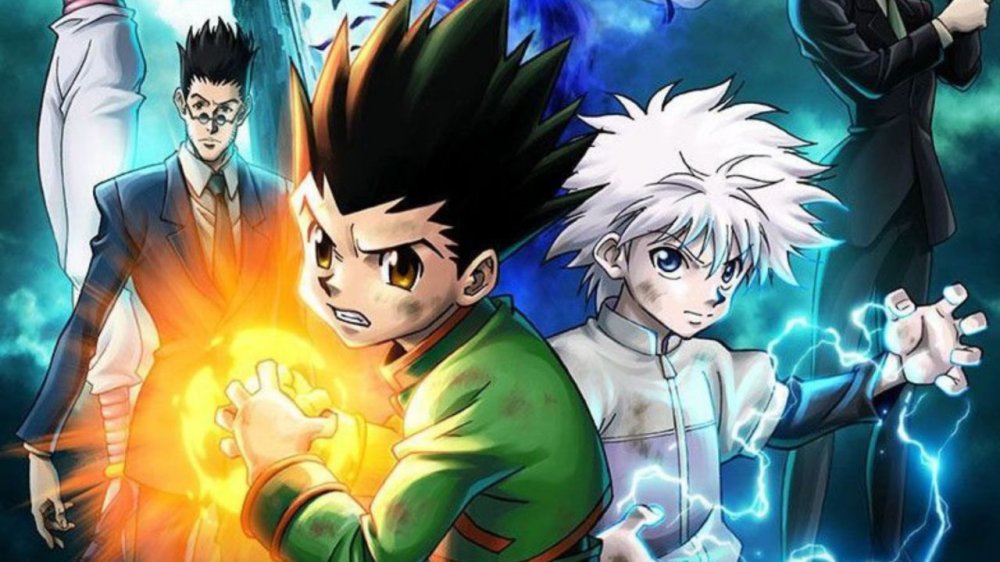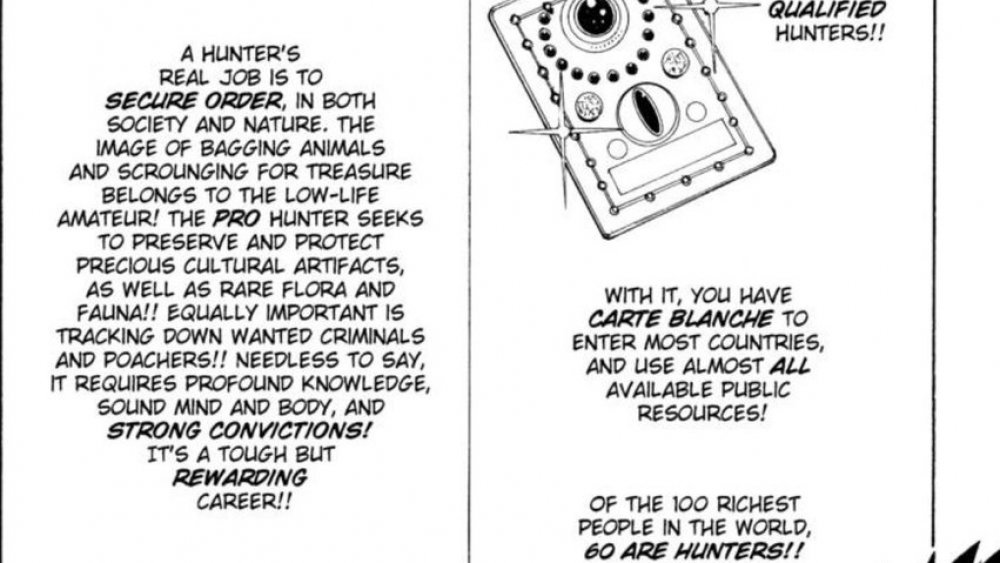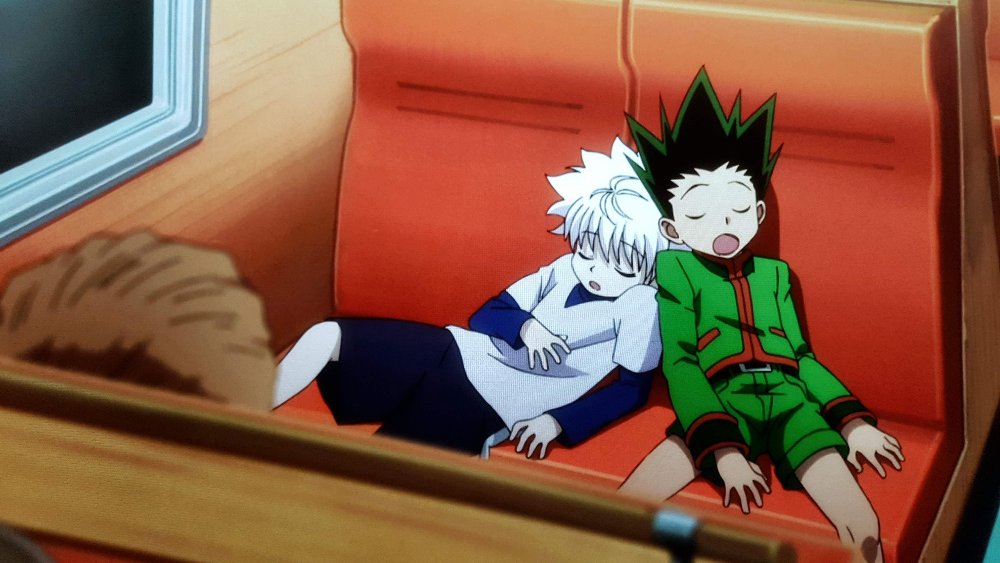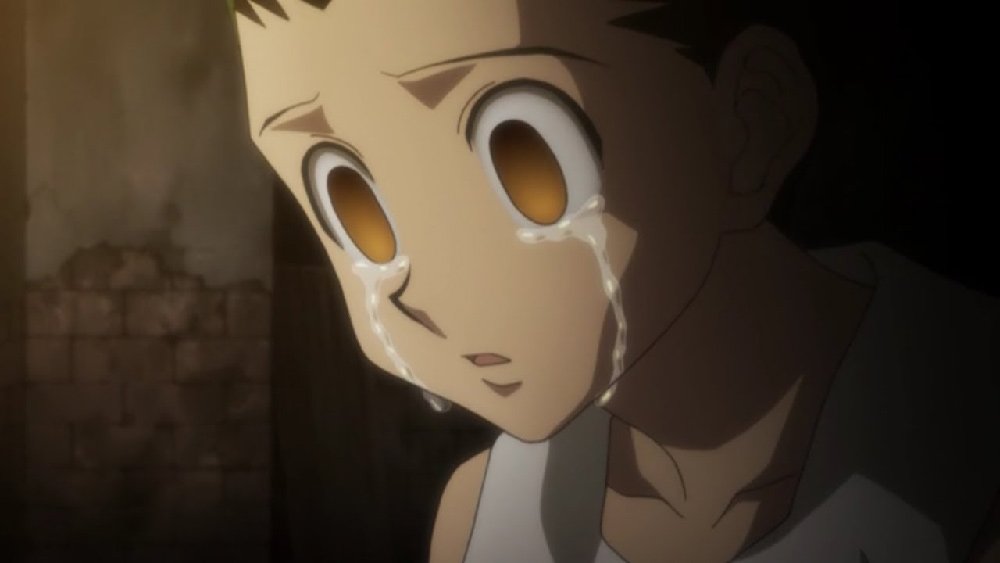The Untold Truth Of Hunter X Hunter
In the world of Yoshihiro Togashi's Hunter x Hunter, the most sought after occupation is... well, you can probably guess from the title. These Hunters are allowed to travel the world, apprehending the most dangerous villains, delving for forgotten treasures and, in the case of Gon Freecss, who embarked on his Hunter career back in 1998, maybe find your dad and make some friends along the way. Since its debut, Hunter x Hunter has become incredibly popular and wildly successful worldwide in both anime and manga.
But while the series is driven by a simple premise and defined by its over-the-top battle scenes, there's more to Hunter x Hunter than what happens on the page. From the interesting personal stories that shaped the series to Togashi's ominous plans for wrapping it up, here's the untold truth of Hunter x Hunter.
Yu 2
When he launched Hunter x Hunter in the pages of Weekly Shonen Jump, Yoshihiro Togashi was already a well-known and successful creator. His breakout book came in 1990 with the launch of Yu Yu Hakusho, which was never renamed when it was brought to English-speaking audiences despite the fact that it translates to the awesome title of Poltergeist Report.
Yu Yu Hakusho had its roots in Togashi wanting to do something that was different from his previous work, a romantic comedy called Ten de Shōwaru Cupid. With the goals of doing something that he would enjoy himself and that would be popular with the Weekly Shonen Jump readership — an audience that loved the fights in series Dragon Ball and JoJo's Bizarre Adventure — Togashi cooked up an action-packed supernatural story that would wind up running for the next four years.
With the story of a tough kid who died and was sent back from the afterlife with the ability to shoot ghosts with spiritual laser beams by making gun-fingers, Yu Yu Hakusho was a hit internationally. After taking a year off for the sci-fi action comedy Level E, Togashi decided to return to the shonen genre — and if the readers wanted fights, he was going to give them a story with a premise that would allow for as many fights as he could fit on a page.
The X, man
While the premise of the comic is pretty straightforward — hunters hunt things and somehow wind up being in a seemingly endless series of battle tournaments — newer readers might be confused before they even get to page one. The problem? The title, Hunter x Hunter, and that pesky "x" sitting there between the two words. Do a search for "Hunter x Hunter pronunciation" and you'll find countless forum posts and even full-length articles asking just what we're supposed to do with that thing. Not since Guilty Gear Xrd Rev 2 have we been so stumped on how to pronounce letters we're usually cool with.
Is it Hunter Ecks Hunter? Hunter Times Hunter? Maybe Hunter Cross Hunter? Hunter Ten Hunter? Turns out that it's none of the above. As very rarely happens in any word, the X is silent. It's just "Hunter Hunter." According to Togashi himself in the sixth volume of the Hunter x Hunter manga, he was inspired to call it "(something) Hunter" by his own experiences collecting things as a child. While trying to figure it out, he was watching a comedy show with a bit where the hosts were repeating words, and "Hunter Hunter" came to mind. As for the X, well, it looks cool, and is probably a spiritual (ha-ha!) successor to the star punctuating the Yu Yu Hakusho logo.
We hope that clears everything up. Now if someone could tell us how the heck we're supposed to pronounce "Freecss."
Power Couple
For manga and anime fans, Yoshihiro Togashi's marriage is a pretty interesting one. After all, one of the people involved is a world-famous artist who has created one of the most beloved manga and anime franchises of all time, defining a genre and finding worldwide success. And the other is Yoshihiro Togashi.
If you missed their wedding announcement, Togashi has spent the past few decades blissfully married to Naoko Takeuchi, the creator of Sailor Moon, which is up there with Astro Boy and Dragon Ball on the list of the most famous anime and manga series in the world. Their relationship has the structure of the wildest romcom you've ever heard of, starting with a meet-cute at a party for single manga creators in 1997 where they fell for each other, and then hitting some pretty rocky territory. According to various recountings of their relationship, Togashi proposed after standing Takeuchi up on her birthday, and then suggested that they "get married" by continuing to live separately, dating other people, and, uh, not actually getting married. Eventually, after Naoko called the whole thing off and prompted Togashi to get it together, they finally got hitched in 1999 and have been happy together ever since.
Those of you who are paying attention to the timeline might've already realized that the start of their relationship coincides with the launch of Hunter x Hunter, and Takeuchi was in fact involved in the early days of the series. Having finished PQ Angels, her follow-up to Sailor Moon, in 1998, Takeuchi had some free time and decided to help out as Togashi's assistant, even designing a few minor characters. If you're curious, they're not hard to spot, as they're the ones that look like Naoko Takeuchi designed them, the most notable of which being Menchi, one of the hunters who administers the exam at the start of the series. Ultimately, Togashi didn't have much for her to do, and she considered giving up on comics and instead going to work as a pharmacist, presumably prescribing Moon Healing Activation to her customers.
Tournament of champions
If you've read or watched Hunter x Hunter — and we hope you have, because this article would be a pretty weird way to get started on it — then you might've noticed something a little unusual about the way the story is structured. It's essentially a series of increasingly challenging tournaments that reveal the strongest people in the world, only to have the next tournament reveal someone even stronger.
It starts with the Hunter Exam, in which only one out of every 10,000 applicants is accepted, and even those are winnowed down by phases that leave only 24 applicants by the time the last one starts. And of those, even a single one passing is considered to be a rarity. Then it turns out that there's a super secret final part of the exam that happens at the Heavens Arena, which is full of fighters so strong that even Hunters can't beat them. Then there are the people who use Nen! And then there are the Floor Masters, who are even stronger and have even better Nen powers! And the people who use Ten are even more powerful than the people who use Nen! And then they go into a video game! We're like eight layers deep into the best of the best of the best, and we're only like 50 chapters into a series that has about 400.
The reason behind this structure is pretty simple. Fighting tournaments have a long and proud history in shonen manga, because they're one of the easiest ways to introduce new adversaries and get straight to the big fight scenes without having to worry about things like complex plotting or character motivation — and that's not a criticism. With Hunter x Hunter, Togashi specifically wanted to focus on the fights, and said as much in an interview that ran in Shonen Jump.
"Analyzing everything, I concluded that the popular works were about sports or battles — stuff where there were clear winners and losers" said Togashi. "Then I thought that if I was going to write something next, it had to be a battle manga after all."
There's no story that presents a clear winner or loser more definitively than a tournament.
Nen of the above
Speaking of Nen, let's talk about one of the most notable and bizarre plot elements that frequently crops up in the series. In its most basic form, Nen is a technique that allows people to tap into a sort of life force that runs through all living things, giving those who master it strange, seemingly magical abilities that can take forms as varied as sensing things or clouding their adversaries' minds, or even shooting out lightning. Those users skilled enough to manipulate this force are called... Jedi Knights. No, wait, sorry, they're just called "Nen Users." Got the notes mixed up there.
Nen and its users have been exhaustively categorized over the course of the series, with six types of users — Enhancers, Transmuters, Emitters, Conjurers, Manipulators, and Specialists — and complicated mathematical formulas used by fans for determining how powerful someone is. Really, though, the limits of Nen powers are determined less by the math and more by what Togashi needs them to do to advance the plot. They are, however, a pretty interesting way for characters to keep progressing indefinitely long after the readers think their training is over. Plus, one of the most powerful Nen users in the world is named "Biscuit," and that rules.
It's worth noting that, like so many things in the world of comics and manga, Nen has an evil opposite. This "dark side," if you will — hey, that's catchy — is called On, and was featured prominently in the 2014 movie Hunter x Hunter: The Last Mission. In the way that Nen is fueled by one's life force and controlled through intense training, On is a sort of "death energy" that is powered by hatred, and gives its users abilities that don't have the categorized limitations of Nen. Jed, the former leader of a secret squadron of Hunters even more powerful than the regular Hunters — because there's always a secret faction of people even stronger than the last secret, super-strong faction — could even pass down the power through his blood. That's how Gon was able to use it, but fortunately, he used regular ol' Nen to purge it from his body afterwards.
Togashi Explains It All
Not that you really need it, but if you're in search of another piece of evidence that Hunter x Hunter is driven first and foremost by the fight scenes, just look at the way Togashi built the setting. The world in which HxH takes place is a genuinely fascinating one, with countless secret organizations and a seemingly endless number of treasures and villains to be hunted. There are magic martial artists fighting for glory in a skyscraper made up of 251 wrestling rings stacked on top of each other, scarlet-eyed children out for vengeance against mysterious assassins, and dudes who can tear off their own arms to win a fight.
But while much of that information comes through the storytelling, the basic ideas of the premise are told to the readers early on through big blocks of text. That might seem like a counterintuitive way for an action-driven manga to get things done, but Togashi explained why he did it when he was interviewed alongside Naruto creator Masashi Kishimoto in 2016, taking questions from readers.
Kishimoto mentioned that he thought it was easier to get readers invested if you started off with a realistic world and then eased the fantastical elements into it, citing the train ride in Harry Potter and the Sorcerer's Stone, but Togashi disagreed, saying "I love it when the first page is packed with caption boxes that explain the world [...] And then the next two pages are the spread. Man, that's my favorite!" Getting that information out of the way at the start allows you to skip right to the good stuff — not just the fights, but the things that make those fights worth reading. As Togashi says, "Manga first needs to be interesting based on character relationships."
Hiatus x Hiatus
For more impatient readers, one of the more notable elements of Hunter x Hunter over the past decade or so has unfortunately had nothing to do with what's on the page. Rather, it has to do with what's not on the page. As Kotaku's Brian Ashcraft put it, "Yoshihiro Togashi is best known for two things: creating Hunter x Hunter and taking breaks from Hunter x Hunter."
Since 2006, Hunter x Hunter has been on hiatus far more often than it hasn't. That year, the series appeared in only four of Weekly Shonen Jump's 48 issues, and that pretty much set the tone of sporadic new installments that readers have seen ever since. The previous record for the longest gap between issues came between June 2014 and April 2016, which kicked off only three months after another two-year hiatus. As of this writing, there hasn't been a new installment since December 2018. If you're more of a visual learner, here's what that looks like in an extremely detailed collection of graphs with a color scheme that, if you're anything like us, will make you crave a Domino's Pizza.
The extended gap between stories has caused some frustrated readers to blur the lines between "enthusiastic fan eager to read the next installment" and "entitled customer demanding that an artist cater to what they want." Some fans have even claimed that the lack of new HxH chapters is down to the release of a new Dragon Quest game and that Togashi is lying about having health problems. It is worth noting, however, that while he does use them (and apparently treats them uncommonly well), Togashi relies far less on assistants than other major manga creators. The above story about Naoko Takeuchi getting bored by not having anything to do when she was working as his assistant would seem to support that, as would interviews where Togashi remarks that he's a perfectionist who prefers to do things himself, as evidenced by the fact that for the collected paperbacks, he often goes back and draws (or re-draws) backgrounds that were missing in the original run.
Hard deadline
Much like it has with George R.R. Martin and A Song of Ice and Fire, Hunter x Hunter's extended hiatuses has prompted some of the more extreme fans to worry that they'll never see the end of the story because Togashi will die before he completes it.
That corner of HxH fandom (or Hunter x Hunter x Hunters, as we hope they're called) has apparently been so vocal that Togashi has felt compelled to address them in a Weekly Shonen Jump interview, while also talking about how he doesn't want to drag things out. "I need to finish writing Hunter X Hunter. It has come to a point where either the story concludes first, or I die before that happens. But I do intend to finish it. Although you can say that at one point in the story — where Gon meets Ging — I have completed the story once. [...] As a reader of Jump myself, I also remember having thought 'Shouldn't this manga have just ended here?' and feeling pissed when it went on and on. I want to always be in touch with that feeling as a reader."
In other words, he intends to finish Hunter x Hunter before he dies, but maybe we can all hope that he lives a long and happy life regardless of his creative output.
